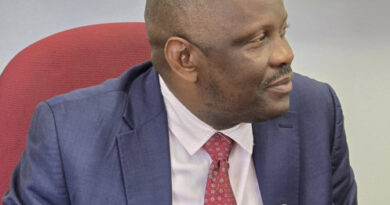Zambia Unveils Energy Plan to Curb Power Crisis
Zambia’s government has rolled out a comprehensive, multi-tiered energy recovery plan in response to a worsening electricity crisis. With a power deficit of 594 megawatts, households are currently subjected to just seven hours of power daily through rotational load-shedding.
Energy Minister Hon. Makozo Chikote, in a detailed ministerial statement to Parliament, outlined urgent short-term actions alongside medium- and long-term interventions aimed at stabilizing the energy sector and diversifying Zambia’s hydro-heavy power mix.
Despite a total installed capacity of 3,777MW, only 1,617MW is currently available due to drastically low water levels at major hydropower stations. Facilities like Kafue Gorge Upper (513MW out of 990MW), Kariba North Bank (553MW of 1,080MW), and Itezhi-Tezhi (51MW of 120MW) are operating well below capacity.
Minister Chikote stressed that unless the country experiences “exceptional rainfall,” reservoir levels may not recover soon, potentially extending the crisis into 2026.
To temporarily fill the supply gap, Zambia is importing 200MW from the Southern African Power Pool at steep costs—USc14.8/kWh compared to USc9.9/kWh last year. This price is nearly double ZESCO’s emergency selling tariff of USc8/kWh. Meanwhile, Zambia continues to export 250MW under regional obligations, a controversial move criticized by citizens but deemed necessary for maintaining financial and grid stability.
To promote renewable alternatives, the government has introduced emergency tariffs and net metering, with 83 solar prosumers now connected to the grid and over 300 more applications approved.
A surge in power infrastructure vandalism is further compounding the crisis. So far in 2025, ZESCO has reported 1,156 incidents, incurring losses of K31 million. The government has ramped up security patrols and launched community awareness programs to curb the trend, which continues to jeopardize recovery efforts.
In line with President Hakainde Hichilema’s directive, the government is fast-tracking the development of 1,000MW in solar capacity by the end of 2025. Key projects include the imminent commissioning of the 100MW Chisamba Solar Plant, the 136MW CEC Solar Itimpi Phase II in Kitwe, and 120MW from GETFiT-backed initiatives. Additional capacity is expected from coal and hydro expansions like the 300MW Maamba Phase II and the 100MW Kafue Gorge Lower project, slated for 2026.
Minister Chikote called on citizens, communities, and businesses to embrace solar solutions, emphasizing that “energy security requires national unity.” The energy roadmap aspires to achieve universal access to clean, reliable energy by 2030, with a strong emphasis on grid resilience and public-private collaboration.
While load-shedding remains an immediate reality, the government projects stabilization by 2026 as new generation sources come online. However, critics remain skeptical, citing the slow pace of solar deployment and heavy reliance on high-cost imports amid the broader challenge of Africa’s $1 trillion debt burden.



